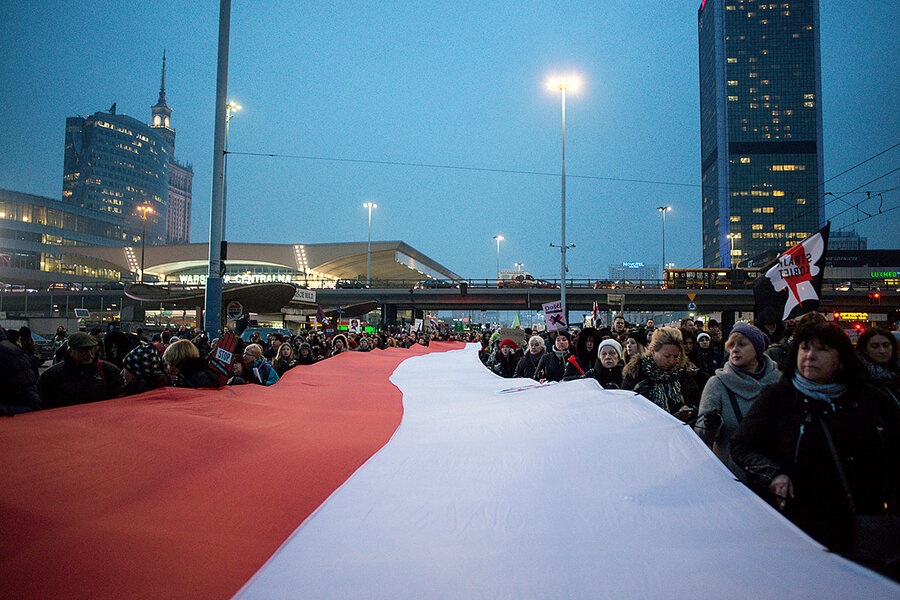In Europe, it is both easier and harder to get an abortion than in US
Loading...
| Paris
Irish women face among the most restrictive access to abortion in Europe. Now that could change, as Irish citizens vote in a referendum on May 25 to repeal the article of their Constitution (known simply as the Eighth Amendment) that bans abortion unless a woman’s life is at risk. If it fails, the article remains. If a majority of Irish vote “yes” to repeal the article, it opens the path to new legislation that could put Ireland more in line with abortion laws in the rest of Europe.
What is the European standard on abortion?
The access to abortion on a woman’s request, or on broad socioeconomic or psychological grounds, is the norm in 25 of 28 member states of the European Union and more broadly in 40 of 47 Council of Europe members. Within the EU, only Ireland, Malta, and Poland have not legalized a woman’s access to abortion on these grounds, says Leah Hoctor, regional director for Europe at the Center for Reproductive Rights in Switzerland.
If Ireland’s referendum passes, then proposals for legislative reform, which include abortion on request up to 12 weeks of pregnancy, will be introduced.
How uniform is that standard?
In practice, it’s a complex landscape of laws and restrictions that vary by country. Of the 40 European countries to have legalized a women’s access to abortion, 36 countries do so on request, while four require a request that is supported by socioeconomic or psychological grounds. Those four are Britain, Cyprus, Finland, and Iceland. There, one or two medical professionals or other professionals such as social workers are required to certify the existence of the grounds under which a woman is requesting an abortion. That makes it, in a purely legal sense, more restrictive.
European laws don’t always match the reality on the ground. Italy, for example, allows for abortion on request in a woman’s first trimester. “However, we see in practice that it is very difficult for women to access legal abortion care in Italy as a result of state failures to appropriately deal with the fact that many medical professionals are refusing to provide abortion care on grounds of conscience and religion,” says Ms. Hoctor.
Of the 36 countries in Europe that allow abortion on request, the vast majority impose time limits of around 12 weeks. Some specify 10 weeks, others 14. Sweden allows a time frame of 18 weeks while in the Netherlands the period is “viability,” like under US federal law. Of the 22 EU countries that permit abortion on request, 11 of them impose mandatory waiting periods between consulting a doctor with a request and when the procedure can take place.
It sounds like it may be easier to get an abortion in the US?
American anti-abortion activists have made this point, and there is some truth to it. But again laws and practice on the ground don’t always match. The time limits for abortion on request in many European countries are shorter than that of the "viability" standard under US federal law.
However, many American women face statewide restrictions, while women in Europe can access abortion after the time limits if they meet certain health and socioeconomic criteria, making it similar to access in the US. And because healthcare generally is universal in many European countries, access is simply easier.
“The really big restriction that exists in the US that doesn't exist in places like France is restrictions on providing funding,” says Julie Rikelman, director of US litigation at the Center for Reproductive Rights in New York. “It’s actually in terms of access much better for many women in Europe.”
Is Ireland an example of abortion access always getting easier?
No, because while the referendum in Ireland was called in a bid to open up access, the polls have narrowed, and it’s far from clear that the “yes” camp will win.
In other European countries, ruling parties, notably that of Poland, have attempted to tighten access in recent years. And in the US, state laws have gotten much more restrictive in the past seven years, with some 400 rules enacted to make it harder to have an abortion since 2011, says Ms. Rikelman. According to the US-based Guttmacher Institute, 18 states today mandate that women be given counseling before an abortion that can include information on long-term mental health consequences, for example.
Waiting periods are in place in 27 states, typically about 24 hours, between when a woman receives counseling after placing a request and the procedure is performed, even though no such time limit is specified under federal law. Sometimes those waiting periods require two separate trips to a clinic. That means that, like in Europe, the ability for a woman to have an abortion is greatly dependent on where she lives and how much money she has.








